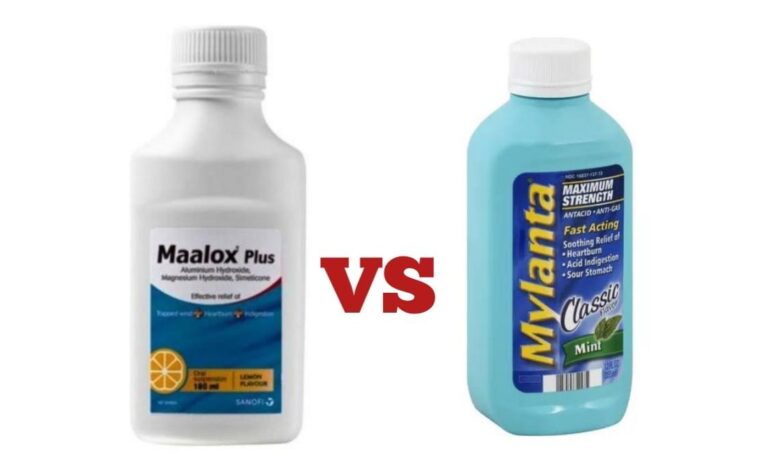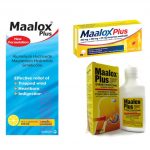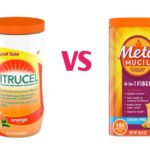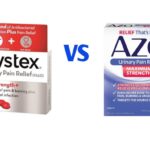Maalox Vs Mylanta: Differences, Similarities, Which is Better?

What are Antacids?
Antacids are a class of medicines that neutralize the acid in the stomach. They contain ingredients that act as bases (alkalis) to counteract stomach acid and make its pH more neutral. pH is a measure of the concentration of hydrogen ions in a solution and this determines how acidic or how alkaline that solution is. The scale ranges from 1 to 14, where below 7 is acidic, 7 is neutral, and above 7 is alkaline. Normal gastric acid pH is in the range of 1.5-3.5.
Antacids are used to relieve the symptoms of Gastroesophageal Reflux Disease (GERD also called acid reflux), heartburn, or indigestion (also called dyspepsia). By neutralizing stomach acid, antacids relieve symptoms such as burning in the chest or throat area caused by acid reflux, a bitter taste in the mouth, a persistent dry cough, pain when lying down, and regurgitation.
Maalox and Mylanta
Maalox and Mylanta are two popular fast-acting antacid brands. Maalox is a balanced mixture of two antacids; aluminum hydroxide is a slow-acting antacid and magnesium hydroxide is a quick-acting one. The two are frequently combined in antacid mixtures. Aluminum hydroxide on its own is an astringent and may cause constipation. This effect is balanced by the effect of magnesium hydroxide, which, in common with other magnesium salts, may cause diarrhea. Gastrointestinal side effects are thus rare with Maalox and this makes it especially suitable when long-term therapy is necessary.
Mylanta on the other hand contains Magnesium Hydroxide, Aluminium Hydroxide, and Simethicone. It is free from lactose, gluten, and Saccharin sodium but contains Mannitol which may have a laxative effect or cause diarrhea in some people.
The major difference between Maalox and Mylanta is the fact that Mylanta contains simethicone anti-gas (anti-flatulence) medication which acts in the stomach and intestines to change the surface tension of gas bubbles, enabling their breakdown and the formation of larger bubbles facilitating the removal of gas from the digestive tract. This ingredient is what allows Mylanta to play its role in relieving bloating.
Can I take Maalox and Mylanta together?
No, you should not take Maalox and Mylanta together because they contain similar ingredients, and using them together can result in an overdose. Serious side effects can occur with an overdose or overuse of antacids. Side effects include constipation, diarrhea, change in the color of bowel movements, and stomach cramps.
Which drugs can interact with Maalox and Mylanta?
When antacids like Maalox and Mylanta are taken with acidic drugs (for example, digoxin [Digitek], phenytoin [Dilantin], chlorpromazine [Thorazine], [isoniazid]), they cause the absorption of the acidic drugs to be decreased, which causes low blood concentrations of the drugs, which ultimately results in reduced effects of the drugs.
When antacids are taken with drugs such as pseudoephedrine (Sudafed, Semprex D, Clarinex-D 12hr, Clarinex-D 24hr, Deconsal, Entex PSE, Claritin D, and more), and levodopa (Dopar), they increase absorption of these drugs and can cause toxicity/adverse events due to increased blood levels of the drugs.
When Maalox or Mylanta is taken with medications such as tetracycline, it binds to the drugs and reduces their absorption and effects.





